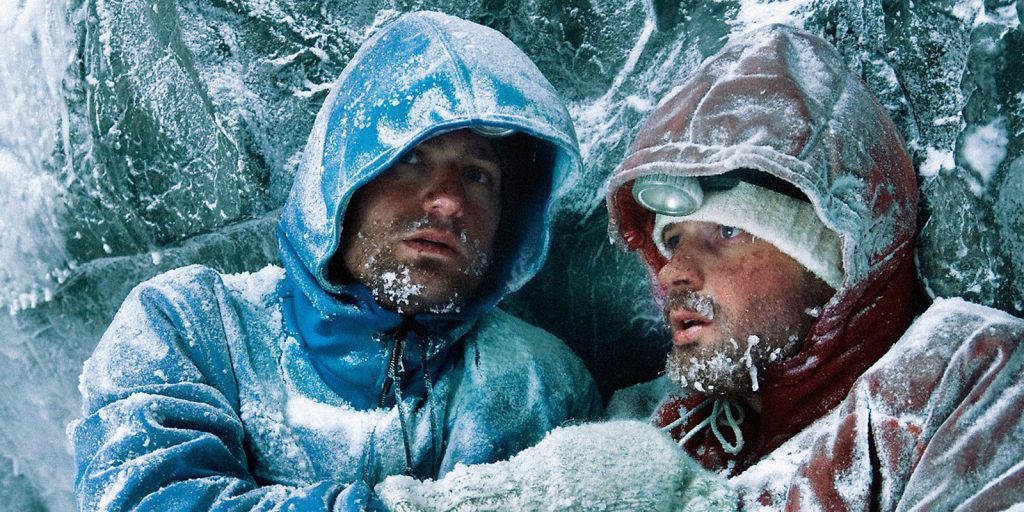An avalanche is a mass of snow that moves along the mountainside at speeds of up to 20–30 meters per second. It can be caused by earthquakes, melting ice, prolonged snowfall or careless actions of people.
An avalanche can cause serious injury. In addition, people caught under it are crushed by the compacted snow and quickly suffocate.
To survive in an avalanche, you should remember and follow several important rules.
How to prepare for a hike in the mountains
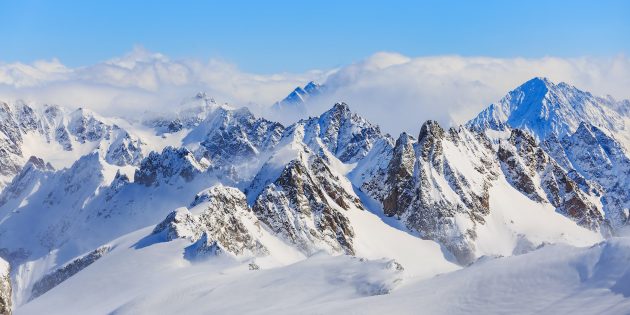
Before traveling through the mountains, you should prepare for possible difficulties. You need to undergo training on how to behave in emergency situations, purchase special equipment and carefully monitor the weather and terrain. The best way to survive an avalanche is to simply avoid it.
Take an avalanche safety course
If you are a skier, snowboarder, hiker or snowmobile owner, do not neglect the opportunity to attend avalanche safety courses in advance. Typically, such activities occupy one or more days and are worth from 15,000 rubles. It’s a small price to pay for theoretical and practical training that could save your life.
Get some rescue equipment
That’s what it’s worth purchase.
- Avalanche receiver, also known as beeper or transceiver. This device sends radio signals at the standard frequency for all beepers at 457 kHz. This will allow rescuers or members of a hiking group to quickly find a person covered by an avalanche.
- Avalanche probe. A thin folding rod from 1 to 6 meters long, which allows you to search for people caught in an avalanche. This thing will help if your group mates are covered in snow.
- Avalanche blade. Needed to dig out victims and equipment from under the snow. Choose aluminum because plastic becomes brittle in the cold.
- Helmet. Many avalanche deaths involve a person being knocked down by a torrent of snow, falling and suffering a fatal head injury. A helmet is simply necessary in the mountains.
- First aid kit. Don’t forget to take a first aid course so you know how to use its contents correctly.
The following tools are less common, but they are also extremely useful.
- Avalanche airbag, also known as an avalanche backpack. This mechanism, which hangs on the back and, when activated, inflates large containers with air. Helps to stay afloat in the snow and also protects against impacts and injuries.
- Avalanche air supply system, or AvaLung. Allows breathe under the snow for 30–40 minutes. Most people caught in an avalanche die from carbon dioxide suffocation. AvaLung takes him aside, increasing his chances of survival.
All equipment comes with instructions. Study them as carefully as possible and remember them by heart.
Know the avalanche conditions
Before visiting the mountains, you should always obtain information about the weather conditions in that area. When you go to a resort or base, you need to look at their website and see the latest news about avalanche conditions there.
Avalanche danger is usually rated on a scale of five and can be found in local weather reports.
Do not go out to the mountains in snowfall and bad weather. Before setting off, find out where possible avalanches may occur on your route. Make sure that in the place where you are walking there is no work being carried out to artificially remove them.
Avoid dangerous places
Remember: no matter what the weather, do not cross the ravine with slopes more than 30°: they are the most avalanche dangerous.
If there are no trees and bushes around, then the slope becomes dangerous even at a steepness exceeding 20°. Slopes with an angle greater than 45° become like this with almost every snowfall.
Before crossing slopes steeper than 20° after a snowfall, you must wait at least 2 or 3 days. The most dangerous periods are spring and summer, from 10 a.m. to sunset.
What to do before an avalanche

These actions should be performed when you see that the snow on the slope begins to crumble.
Jump up the hill
Often the victims of an avalanche are those who themselves caused it through a careless movement. If you feel like the snow is starting to melt right below you, try jump up the slope above the break line so as not to end up in the center of the flow.
This must be done in the first second, and then it will pass below you. But the technique only works with an avalanche originating under your feet, and not with a flow coming from above.
Move away from the avalanche
If you see a snow stream moving towards you, do not try to run away from it down the slope: it will catch up with you. Instead immediately move to the side, perpendicular to the avalanche. This way you can get out of her way before she gets to you.
The avalanche is weaker at the edges than in the middle. By moving away from the central part of the flow, you reduce the likelihood of falling, rolling and injury.
Experienced skiers can overtake an avalanche by leaving it at an angle of 45°, but this requires remarkable freeride skill. Don’t take risks, move perpendicular to the flow, not diagonally.
Throw away unnecessary equipment
To survive in an avalanche, the body must be as light as possible: this increases the chances of staying on the surface without sinking under the snow. Therefore it is worth throw off all the extra equipment you can get.
Take off your backpack. Get rid of your skis and poles. Zip your clothes to keep snow out.
Throw away heavy objects and equipment so that they do not roll along with the avalanche and injure you.
Activate your avalanche beacon. Many tourists simply forget about it, and it becomes useless. Disconnect your headphones and player if they are still on.
What to do during an avalanche
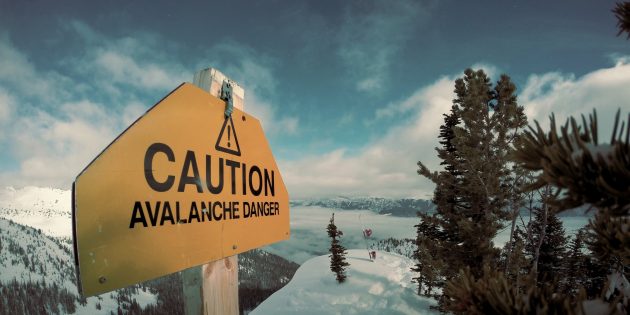
If you are unable to avoid the avalanche, take the following actions.
Grab onto something strong
Trees and boulders are unlikely to save you in a large avalanche, but smaller ones will help in snow flows hold on.
Try grab hold of behind a branch, a strong stone, or take cover behind a rock ridge or large trunk. This will increase your chances of not falling into the snow and rolling down the slope.
Stay afloat
When it is impossible to find shelter or there is not enough time, all that remains for someone caught in an avalanche is to stay as close to its surface as possible so as not to sink very deep into the snow.
Commit swimming movements, pushing legs and flapping arms. If you can, “float” up the mountain on your back: this way you will end up on the surface of the snow.
If you have an avalanche airbag with you, now is the time to pull the handle that activates it.
In the case where “swimming” is too difficult, at least try twitch upward so as not to drown in the snow.
Take a deep breath
Take a deep breath and keep your chest inflated. This will help maintain breathing space around your body if you find yourself deep under an avalanche. Otherwise, the compacted snow will severely compress the lungs.
Raise one hand up
This is, of course, easier said than done, but to attempt need to. Keep one arm above your head as the avalanche hits you.
Firstly, this will help rescuers find you faster. Secondly, if your hand remains free, you will quickly determine which direction to dig in order to reach the surface faster.
Protect your respiratory system
Most people in avalanches die from suffocation. They literally choke on the snow as it stuffs itself into their mouths, and sometimes goes straight into their lungs.
Protect your mouth and nose: close with a mitten or scarf to prevent snow from getting in there. And keep your jaws closed so you don’t accidentally bite your tongue.
What to do when the avalanche slows down
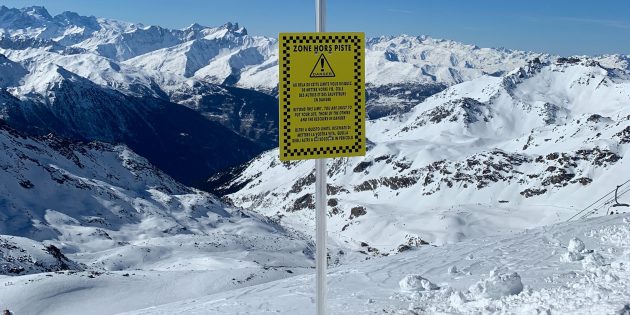
The avalanche does not last long. Typically, before stopping, the thread can pass the about one and a half kilometers, which will take about a minute. When you feel the movement slowing down, do the following.
Create an air pocket for breathing
To avoid suffocation, create breathing space by clearing snow in front of your face and chest. In such a pocket of air enough for about half an hour.
Before the avalanche settles, take several deep breaths to expand your chest. This will prevent the snow from pinching your body and squeezing your lungs.
If you have an AvaLung device or its analogues, now is the time to activate it and insert the mouthpiece into your mouth.
Don’t panic or scream
Snow drowns out sounds. Therefore, even the most desperate calls for help will not attract group mates or rescuers, but will only waste oxygen.
What to do when the avalanche stops
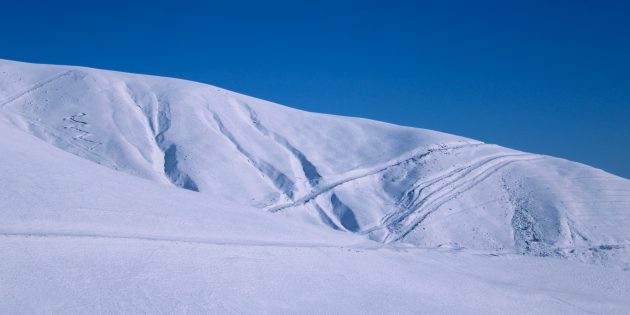
If the flow of snow around you stops moving, you should take more active steps to save yourself.
Define top and bottom
Most people, covered by an avalanche, find themselves disoriented and cannot understand which way to dig out. You may unknowingly burrow deeper and waste your oxygen supply.
Instead, digging out the air pocket in front of the face, spit right in front of you. See which direction gravity takes your saliva and then dig in the opposite direction. It is better to do this several times – for reliability.
If you can’t spit, look in which direction the steam comes out when you exhale. It should go up – that’s where you should dig.
Try to dig yourself out
Start by shoveling the snow in front of your face and chest and above your head and move it under your feet and then compact it. So you can get out. Save your energy and don’t shout.
Wait for help
If you can’t dig out, don’t waste oxygen on useless movements. Get out on your own succeeds those covered with no more than 15 centimeters of snow. For those who find themselves deeper, it is better to remain calm and wait for help.
Make sure the avalanche beacon is turned on and working. Try to bring your hand to the surface to give a signal. If you feel the urge to urinate, do so. It will, of course, be unpleasant, but the smell of urine will help the rescue dogs find you.
Call for help
When you hear that they are starting to dig you out, start speak with rescuers. Tell them where you are, what is happening to you, and whether you have any pain or injury. This will allow them to quickly understand what kind of help you need.
Leave the danger zone
Sometimes there is danger repeated avalanche. If you got out from under the snow on your own and there are no rescuers nearby, inspect your body for damage and, if necessary, give yourself first aid.
Then try to get to the nearest populated area as soon as possible. Consult a doctor, and also inform the local administration that an avalanche has occurred and there may be other victims under the snow who will also need help.
How to survive winter 🧐
